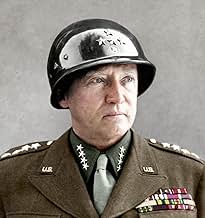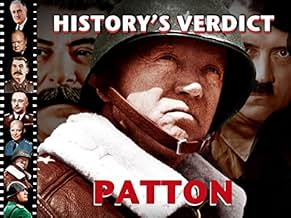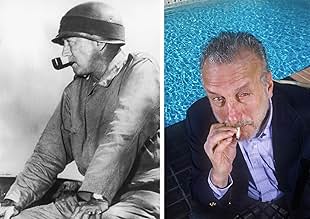George S. Patton(1885-1945)
George S. Patton III was a highly successful and highly controversial general who held Corps- and Army-level commands during World War II. Because of his great competence as a battlefield commander, Patton might have led the American troops during the invasion of Normandy; however, his impolitic ways and a degree of emotional instability (which manifested itself in the slapping of two soldiers suffering from shell-shock at an Army field hospital) put the kibosh on that. Patton was relieved of his command and put on ice for many months in order to recuperate. Instead, the command of the American forces on D-Day, went to his former deputy in North Africa, Omar N. Bradley.
Patton was known as "Blood & Guts" ("Our blood, his guts"), was a common gripe among his troops for his hard-driving discipline, which paid off in lower casualties and great success on the battlefield. With the exception of Douglas MacArthur, Patton ranks as the greatest general the United States put on the field during the Second World War. Patton achieved four-star rank for his battlefield exploits as one of the best commanders of mechanized forces on either side during the War. He succeeded Dwight D. Eisenhower as the Military Governor of the U.S. Occupation Zone in Germany, when Ike -- a five-star general -- was promoted to Army Chief of Staff.
On December 9, 1945, Patton became seriously injured after his automobile crashed with an American army truck at low speed. He began bleeding from a gash on his head, and complained that he was paralyzed and having trouble breathing. Taken to a hospital in Heidelberg, Patton was discovered to have a compression fracture and dislocation of the cervical third fourth vertebrae, resulting in a broken neck and cervical spinal cord injury that rendered him paralyzed from the neck down. He spent most of the next twelve days in spinal traction to decrease the pressure on his spine. He died at age 60 in his sleep of pulmonary edema and congestive heart failure.
On December 24, 1945, General George S. Patton was buried at the Luxembourg American Cemetery and Memorial alongside some wartime casualties of the Third Army, in accordance with his request to "be buried with his men". He was immortalized in the 1970 eponymous epic film, which won seven Academy Awards, including Best Picture and Best Actor (George C. Scott). This was President Richard Nixon's favorite film.
Patton was known as "Blood & Guts" ("Our blood, his guts"), was a common gripe among his troops for his hard-driving discipline, which paid off in lower casualties and great success on the battlefield. With the exception of Douglas MacArthur, Patton ranks as the greatest general the United States put on the field during the Second World War. Patton achieved four-star rank for his battlefield exploits as one of the best commanders of mechanized forces on either side during the War. He succeeded Dwight D. Eisenhower as the Military Governor of the U.S. Occupation Zone in Germany, when Ike -- a five-star general -- was promoted to Army Chief of Staff.
On December 9, 1945, Patton became seriously injured after his automobile crashed with an American army truck at low speed. He began bleeding from a gash on his head, and complained that he was paralyzed and having trouble breathing. Taken to a hospital in Heidelberg, Patton was discovered to have a compression fracture and dislocation of the cervical third fourth vertebrae, resulting in a broken neck and cervical spinal cord injury that rendered him paralyzed from the neck down. He spent most of the next twelve days in spinal traction to decrease the pressure on his spine. He died at age 60 in his sleep of pulmonary edema and congestive heart failure.
On December 24, 1945, General George S. Patton was buried at the Luxembourg American Cemetery and Memorial alongside some wartime casualties of the Third Army, in accordance with his request to "be buried with his men". He was immortalized in the 1970 eponymous epic film, which won seven Academy Awards, including Best Picture and Best Actor (George C. Scott). This was President Richard Nixon's favorite film.






